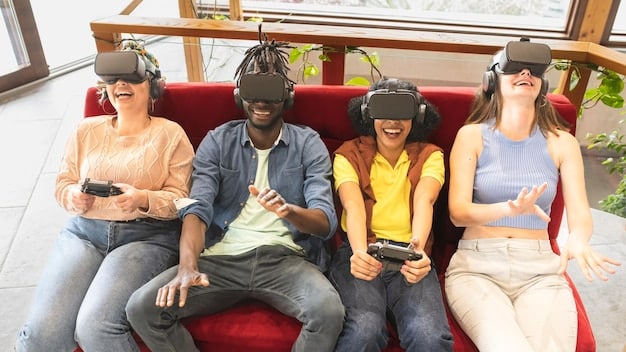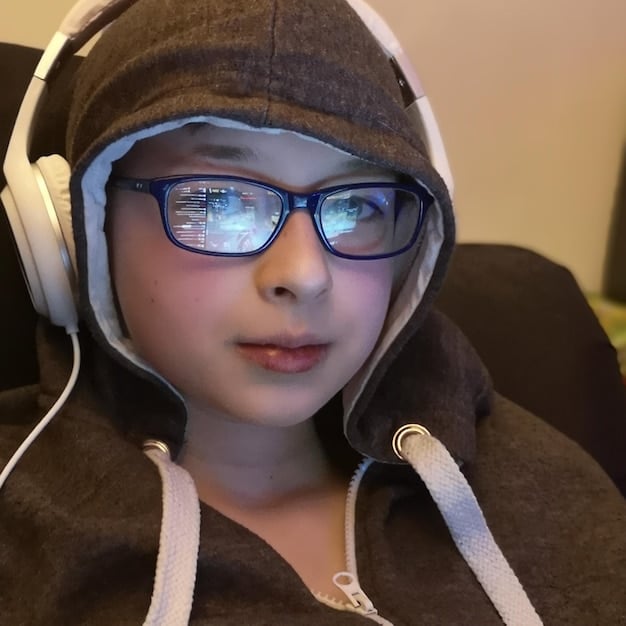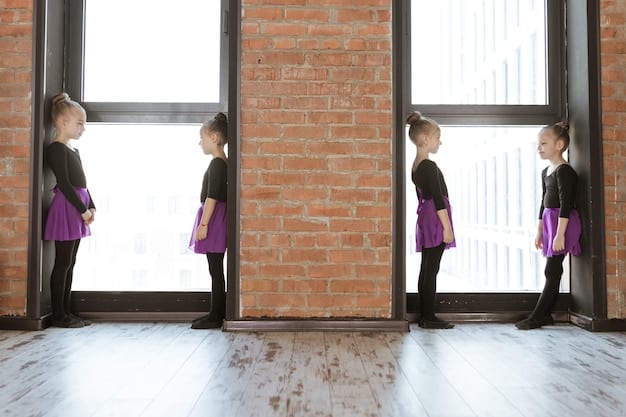VR in US Education: Immersive Learning Experiences

US education is increasingly embracing virtual reality (VR) to create immersive learning experiences, transforming traditional teaching methods and enhancing student engagement. This innovative approach offers new ways to explore subjects and develop skills.
The landscape of US education: implementing virtual reality for immersive learning experiences is rapidly evolving. As technology advances, educators are discovering innovative ways to enhance learning, and virtual reality (VR) is emerging as a powerful tool. This article explores how VR is being integrated into American classrooms, its benefits, challenges, and future potential.
The Rise of VR in US Classrooms
Virtual Reality (VR) is no longer a futuristic concept; it’s a present-day reality in many US classrooms. The technology’s ability to transport students to different environments and create interactive learning experiences is proving invaluable. From historical reenactments to scientific explorations, VR is transforming how students engage with educational content.
This section examines the increasing adoption of VR in American schools and the reasons behind its growing popularity among educators and students alike.
Why VR is Gaining Traction
The appeal of VR in education stems from its ability to address several key challenges in traditional learning environments. Visual learning, engagement and accessibility are a few reasons for VR’s increasing adoption.
- Enhanced Engagement: VR captivates students’ attention and makes learning more exciting and memorable.
- Improved Retention: Immersive experiences facilitate better understanding and retention of information.
- Personalized Learning: VR can be tailored to individual student needs and learning styles.
VR is being welcomed because of it’s power to create experiences never imagined. As the technology continues to develop and become more affordable, we’re only seeing the tip of the iceberg as to how this is changing traditional education.

Benefits of Immersive Learning Experiences
Immersive learning experiences through VR offer a multitude of benefits for US students. These experiences go beyond traditional textbook learning, providing students with a dynamic and interactive way to explore different subjects. The blend of realism and immersion creates an environment where learning feels more like an adventure than a chore.
Here, we delve into the specific advantages that VR brings to education, including its impact on student engagement, understanding, and skill development.
Boosting Student Engagement
One of the most significant benefits of VR is its ability to boost student engagement and it is being used to enhance the experience in modern classrooms.
- Active Participation: Students become active participants in their learning process.
- Curiosity and Exploration: VR sparks curiosity and encourages exploration of concepts.
- Real-World Connections: Students can apply their knowledge in realistic scenarios.
The active participation that VR is providing modern students is unmatched in comparison with other traditional forms of learning.
VR Applications Across Different Subjects
VR’s versatility makes it applicable across a wide range of subjects in the US education system. From science and history to language arts and mathematics, VR is finding its place in diverse curricula. By creating interactive and immersive environments, VR helps students better understand complex concepts and develop critical skills.
This section examines specific examples of how VR is being used in various subjects to enhance learning outcomes and foster a deeper understanding of the material. The range of VR is endless.
VR in History Education
VR offers a unique opportunity to bring history education to life through reenactments.
- Virtual Field Trips: Visit historical sites like ancient Rome or the Egyptian pyramids without leaving the classroom.
- Interactive Simulations: Participate in historical events and experience them firsthand.
- Cultural Understanding: Gain a deeper understanding of different cultures and time periods.
Virtual field trips can change the way one understands information and history from a book by actually seeing how it looks.
Moreover, VR in history is promoting cultural understanding and making students more globally aware. By interacting with historical events or different cultures, people are given cultural understanding.
Challenges and Limitations of VR in Education
Despite its numerous advantages, the implementation of VR in US education is not without its challenges. Issues such as cost, accessibility, technological limitations, and potential health concerns need to be addressed to ensure that VR is used effectively and equitably.
In this section, we explore the obstacles that educators and policymakers face in integrating VR into the classroom and discuss potential solutions to overcome these challenges.

Addressing the Cost Barrier
One of the primary challenges of VR is the high cost of equipment and software.
- Initial Investment: VR headsets, computers, and software can be a significant financial burden for schools.
- Maintenance and Upgrades: Ongoing maintenance and upgrades add to the total cost of ownership.
- Equity and Accessibility: Ensuring that VR is accessible to all students, regardless of socioeconomic status, is crucial.
Accessibility is an important component in addressing the cost barriers to education with new technology. Furthermore, maintenance and upgrades are a continuous strain on most traditional schools.
However, there are opportunities in fundraising, private contributions and grants that can continue to move the needle.
The Future of VR in US Education
The US education is ever changing and on the cusp of many technological changes. As technology continues to evolve, the future of VR in US education looks promising. With advancements in hardware, software, and educational content, VR has the potential to become an integral part of the learning experience. From personalized learning paths to collaborative virtual environments, VR is poised to reshape the way students learn and prepare for the future.
This section explores the potential future applications of VR in American classrooms and discusses how educators and policymakers can harness its full potential.
Personalized Learning Paths
VR offers the possibility of creating personalized learning paths tailored to individual student needs and learning styles. Some benefits are the ability to work at their own pace.
- Adaptive Learning: VR can adapt to each student’s pace and comprehension level, providing customized instruction.
- Targeted Interventions: VR can identify areas where students need extra support and provide targeted interventions.
- Skill-Based Training: VR can offer skill-based training modules that focus on specific competencies.
By creating learning paths specific to the students abilities, this can create a learning system tailored to specific skills.
Preparing Educators for VR Integration
The successful implementation of VR in US education depends on adequately preparing educators to use this technology effectively. Teacher training programs, professional development opportunities, and ongoing support are essential to ensure that teachers can leverage VR to enhance their teaching practices.
This section examines the strategies and resources needed to prepare educators for VR integration and discusses ways to foster a culture of innovation and experimentation in schools.
The Importance of Teacher Training
Ensuring that teachers are trained on how to implement VR in their teachings can lead to successful adoption. As teachers use the system, they can provide real feedback on what works and what does not work.
| Key Point | Brief Description |
|---|---|
| 🧑🏫 Enhanced Engagement | VR captivates students, making learning exciting. |
| 🧠 Improved Retention | Immersive experiences improve understanding and retention. |
| 💰 Cost Barriers | High equipment costs pose challenges. |
| 🚀 Future Potential | VR is poised to reshape learning in the US. |
Frequently Asked Questions
▼
Virtual Reality (VR) in education uses technology to create immersive, interactive learning environments, allowing students to experience subjects in new and engaging ways beyond traditional classroom settings.
▼
VR enhances student engagement by offering interactive and immersive experiences that capture students’ attention, promote active participation, curiosity, and exploration, and connect learning to real-world applications.
▼
Many different subjects have realized the benefit of VR applications, including history, science, language arts, and mathematics can benefit from VR. It provides interactive environments that enhance comprehension.
▼
Implementing VR in schools involves facing the high costs of equipment and software, technical limitations such as ensuring compatibility and functionality, and providing ongoing teacher training and support for effective use.
▼
The future of VR in US education will likely include personalized learning paths and the use of adaptive learning, skills-based training VR that adapts to each student’s needs, pacing, and comprehension level.
Conclusion
Virtual reality is an important component in the evolution of US education. By providing engaging education, and the ability to provide real context for textbook learning. While still in its infancy, VR is providing solutions to many challenges of today, but at the same time is dealing with challenges of cost and adaption of old teaching techniques that need to change.





